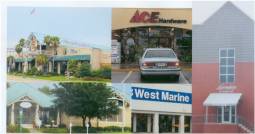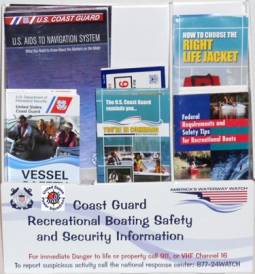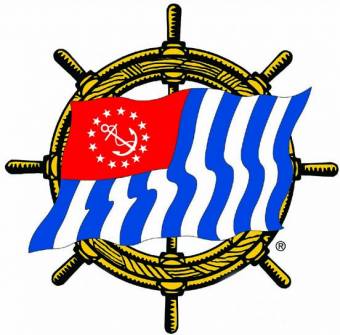User Tools
This is an old revision of the document!
U.S. Power Squadrons
Organized in 1914, the United States Power Squadrons (USPS) is a non profit, educational organization dedicated to making boating safer and more enjoyable by teaching classes in seamanship, navigation and related subjects. USPS members are boating families who contribute to their communities by promoting safe boating through education. USPS members enjoy participating with fellow members on the water and in the classroom.
USPS has nearly 40,000 members organized into over 400 squadrons across the country and in some US territories. USPS is America's largest non-profit boating organization and has been honored by three US presidents for its civic contributions.
What are USPS activities?
Each squadron's activities involve the three primary objectives of USPS: community service, continuing education, and enjoying fellowship.
Every squadron offers carefully planned courses in subjects like Seamanship, Piloting, Plotting and Position Finding, Celestial Navigation, Cruise Planning, Engine Maintenance, Marine Electronics, Sailing, and much more. These courses are taught by experienced member instructors, and members who complete them are recognized.
Participating both on-the-water and off with fellow members who are skilled in boating is a rewarding and enjoyable experience. On-the-water activities include cruises, rendezvous, sail races, navigation contests and even fishing derbies. Activities ashore include meetings with marine programs, parties, dinner-dances, picnics and field trips.
USPS Program Visitation
 Recreational Boating Safety Program Visitation lets Power Squadron members establish local partnerships that they visit regularly. It is a key element in the US Coast Guard’s Recreational Boating Safety Program that the Coast Guard Auxiliary is actively supporting.
Recreational Boating Safety Program Visitation lets Power Squadron members establish local partnerships that they visit regularly. It is a key element in the US Coast Guard’s Recreational Boating Safety Program that the Coast Guard Auxiliary is actively supporting.
The emphasis of Program Visitation is to recruit businesses to display boating safety pamphlet distribution racks to the public. The program is administered by a Program Visitor who maintains the material in the display rack. This also gives the Program Visitor an opportunity to clarify safety issues, promote boater education, and the Vessel Safety Check program.
The Program Visitor
The Program Visitor (PV) is the key person in the Recreational Boating Safety Program Visitation program. The success of the program rests squarely with the PV.
The Program Visitor is a specially trained and certified Power Squadrons member. He or she must be very knowledgeable about Power Squadrons missions, recreational boating safety, and the U.S. Coast Guard recreational boating safety program. This knowledge comes through experience in the Power Squadrons and Program Visitation training. We will discuss this training in a moment.
Program partners
 A program partner is any community business or facility where the public is that will allow the Program Visitor to place a boating safety literature display rack.<br />
A program partner is any community business or facility where the public is that will allow the Program Visitor to place a boating safety literature display rack.<br />
Traditional partners include marine dealers, marine retail outlets, and boating supply stores. Non-traditional partners include any establishment that might be visited by recreational boaters. Examples include: doctors’ offices, gas stations, and hardware stores.
What we distribute
 Just about anything can be placed in the literature displays. You can use information from the Coast Guard or from any organization that provides you literature, or from your state or local authorities, or you can design your own pamphlets and brochures locally. You are only limited by your own imagination.
Just about anything can be placed in the literature displays. You can use information from the Coast Guard or from any organization that provides you literature, or from your state or local authorities, or you can design your own pamphlets and brochures locally. You are only limited by your own imagination.
You can promote local Vessel Safety Checks, boater education classes, or membership in the US Power Squadrons.
USPS benefits
There are many benefits to the Power Squadrons and its members. Program Visitation increases the public’s awareness of the Power Squadrons, its goals and its missions. The literature display is also an excellent way to advertise Power Squadrons programs like as America’s Boating Course, boater education programs, vessel safety checks and other squadron activities.
It enhances the Power Squadron’s image as an organization dedicated to promoting boating safety. You have the satisfaction of knowing that by participating in Program Visitation, you help save lives and property. Participation also provides an venue for recruiting new Power Squadron members. On an individual basis, participation in the program can earn the member a Merit Mark.
Cooperation for Auxiliarists
- Between the Auxiliary and the Power Squadrons, we're only reaching about 3% of the recreational boating public with our courses and vessel exams. We are not in competition with each other.
- By approaching media “gate keepers,” such as assignment editors, news editors, and feature story writers together with our USPS counterparts, we can legitimately claim to represent a larger share of a media's readership/viewers, thereby increasing our chance of coverage.
- By working in parallel, we can effectively double our publicity efforts, our personal contacts, media contacts, even signage and handouts. In other words, working alongside each other, we are likely to significantly increase attendance at our events, such as “VSC Blitzes,” safety demonstrations, etc.
- Although we share common educational and safety goals, our organizations are built on different foundations, each group will probably attract different members. Because we move in different circles, one group's members may have contacts (personal, professional, and in the media) that the other's do not. And because we are different people, “their” members may have skills that “our” members do not. And resources that the other group may not. “They” may have members qualified to teach classes in areas where “we” have few or none.
- Some USPS chapters have advertising budgets to publicize activities; while perhaps the Coast Guard Auxiliary has name recognition that the Power Squadrons are still building. Joint advertising may well benefit both organizations.
- Many families belong to both organizations. So some USPS members who are not yet (or no longer) Auxiliary members may want to join your flotilla; and some Auxiliary members may find expanded contacts in their local Power Squadron.
- Many members of the Power Squadrons own boats; Encouraging cross-membership may increase a flotilla's number of operative Auxiliary facilities.
- In short, by building cooperation between two organizations, we can enhance our ability to get our message out to our target audience, the boating public. By “leaving a bigger wake,” perhaps we can generate more awareness of, and interest in, our mutual message.
- Expand our focus beyond the 3% of the recreational boating public we currently reach to the 97% who need us more than they know.
Resources
- USCG Auxiliary and US Power Squadron Working Together (Coast Guard Auxiliary Live)
- U.S. Power Squadrons, Coast Guard Auxiliary to boost boating safety efforts (Boating Times - Long Island)
Contributed by
- Joe Reichal, DVC-VP - Flotilla 01-04, 8th District (Coastal Region)
- Mike Wiedel, USPS Safety Committee
- Stephen Ellerin, BC-BLU - Flotilla 08-02, 7th District



